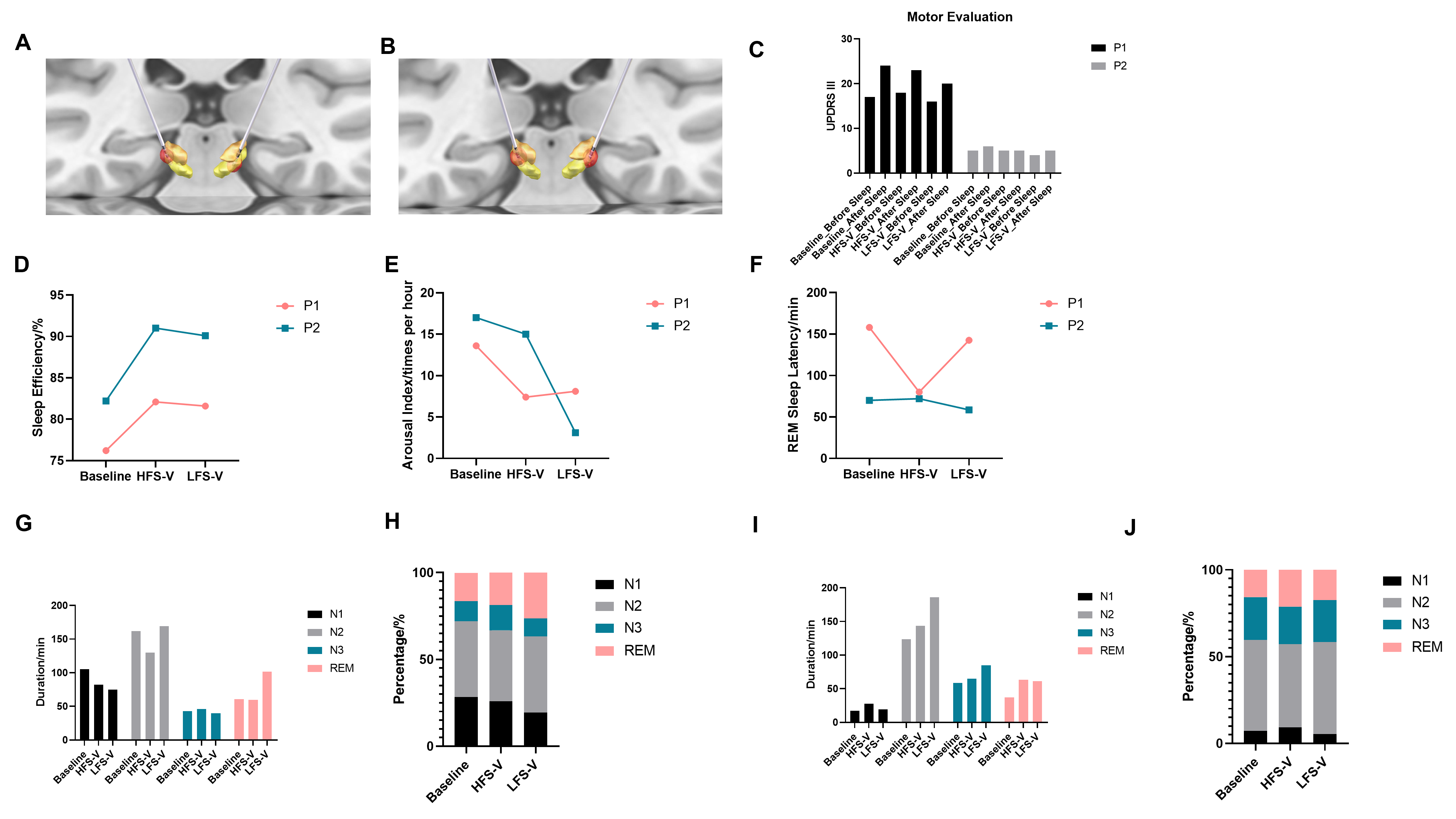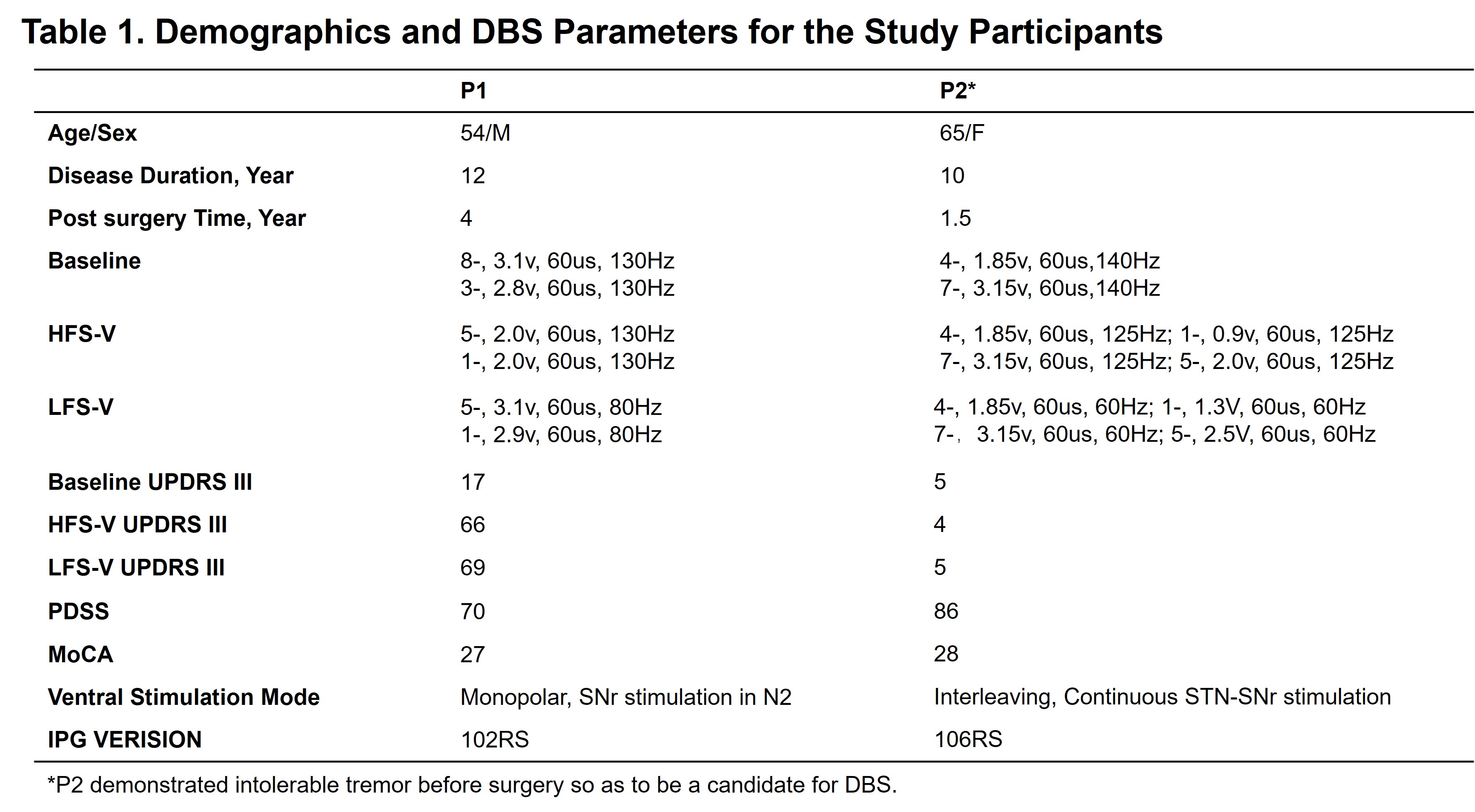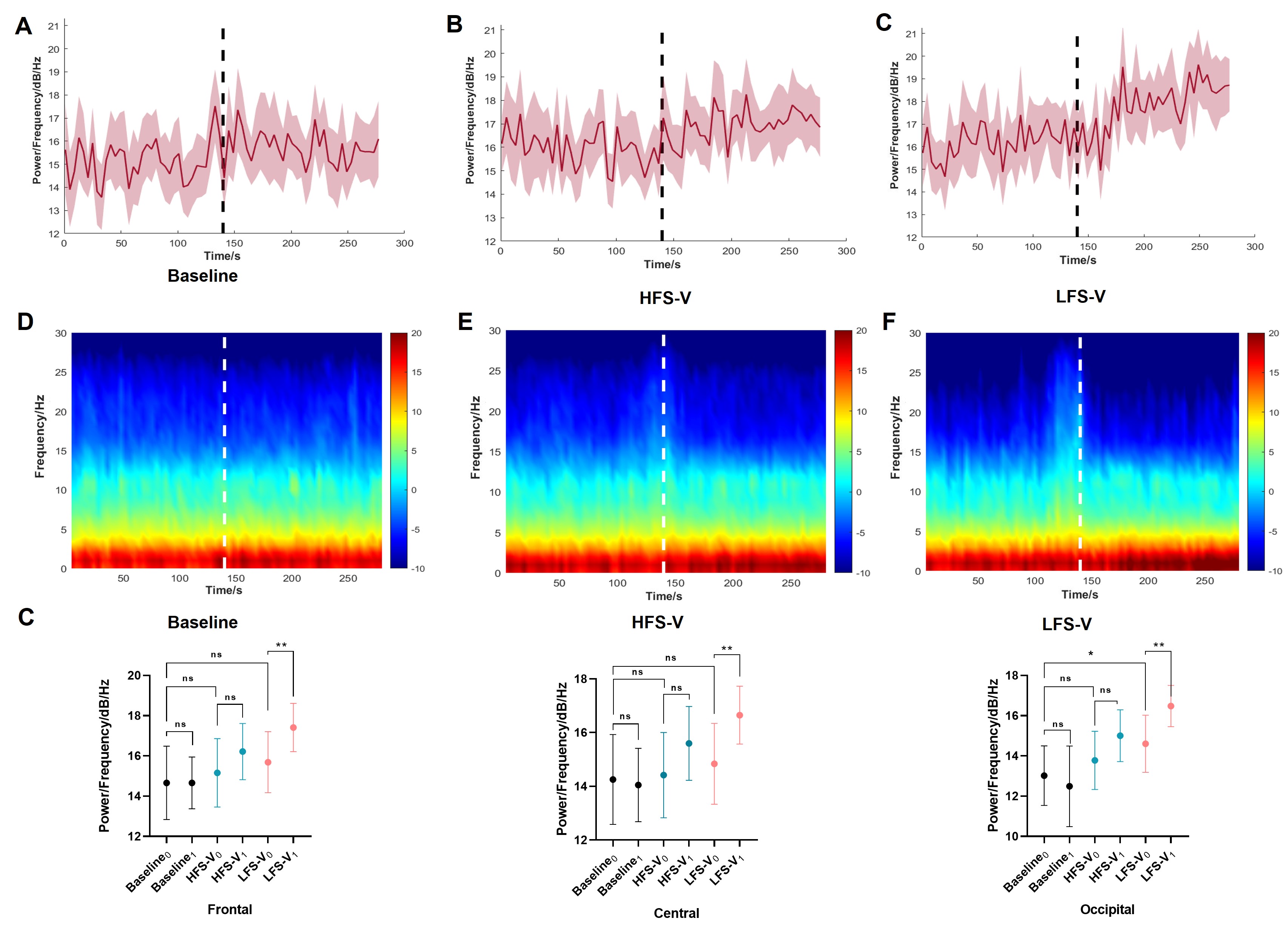Category: Surgical Therapy: Parkinson's Disease
Objective: To explore how subthalamic deep brain stimulation (STN-DBS) targeting substantia nigra pars reticulata (SNr) can modulate sleep in Parkinson’s disease (PD) patients with electrophysiologic measures.
Background: STN-DBS has been shown to improve sleep in PD. However, the pattern of sleep modulation is unclear. Previous in vivo studies have found that SNr has a critical role in sleep modulation through basal ganglia-brainstem circuitry, but objective measures jn PD sleep patterns are are lacking.
Method: In this proof-of-concept study, we studied the sleep pattern in two PD patients more than one year after STN-DBS surgery whose motor control was optimized [Patient 1 (P1), Patient 2 (P2)]. Three discontinuous nocturnal sleeps monitoring with polysomnography were performed. Electrode location of STN-DBS and the location of SNr were verified and volume of tissue activation was calculated. The most ventral contact was used as SNr target. The DBS programming was set at baseline, or high frequency SNr stimulation (130Hz, 60us, HFS-V) or low frequency SNr stimulation (80Hz or 60Hz, 60us, LFS-V), respectively. In Patient 1(P1), DBS was switched to HFS-V or LFS-V in N2 stage and back to baseline in N1, N3 and REM stage during nocturnal sleep. In P2, interleaving mode was used so as to add ventral stimulation while retaining the original stimulus parameters during whole sleep.
Results: Demographic characters and DBS parameters were shown in Table 1. Although stimulation of SNr alone showed motor deterioration in P1 during parameter testing, there was no compromise with motor control upon switching back to the baseline parameters from the two new settings upon waking up (Figure 1 C). Sleep efficiency and arousal index were improved in HFS-V and LFS-V (Figure 1D, E). REM sleep latency was decreased with SNr stimulation (Figure 1 F). Analysis of power spectrum density (PSD) before and after SNr stimulation in N2 stage in P1 (Pseudo-stimulus sites were similarly selected in baseline N2 stage) showed increased δ band PSD with SNr stimulation, especially with LFS-V (Figure 2).
Conclusion: In this proof-of-concept study, we showed that STN-DBS targeting SNr during sleep has influenced sleep architecture and improve sleep quality in PD without impacting daytime motor function, shedding some light on the sleep modulation effect of SNr stimulation.
To cite this abstract in AMA style:
HL. Yu, LX. Guan, YN. Sui, F. Ba, LM. Li. STN-DBS Targeting SNr Modulates Sleep in Parkinson’s Disease: A Proof-of-Concept Study [abstract]. Mov Disord. 2022; 37 (suppl 2). https://www.mdsabstracts.org/abstract/stn-dbs-targeting-snr-modulates-sleep-in-parkinsons-disease-a-proof-of-concept-study/. Accessed October 22, 2025.« Back to 2022 International Congress
MDS Abstracts - https://www.mdsabstracts.org/abstract/stn-dbs-targeting-snr-modulates-sleep-in-parkinsons-disease-a-proof-of-concept-study/



